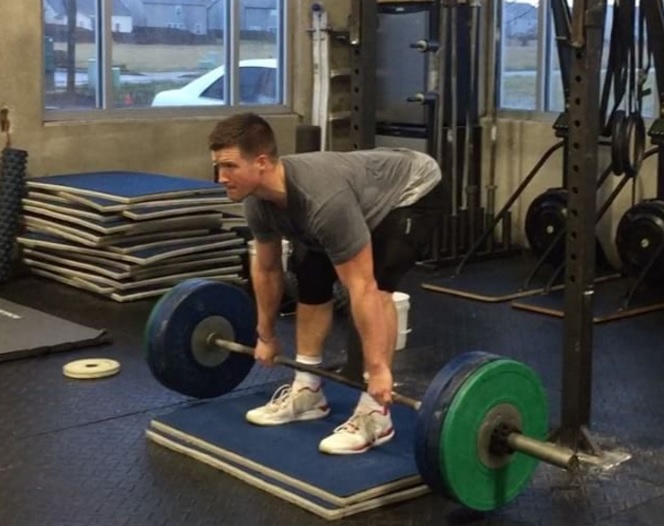When we first hear people discuss their lower backs we often think of the word “pain”, rather than “astounding strength” or “superb development”. The notion of training the lower back to elicit specific muscular development can often be neglected outside of formal strength and power sports. Regardless of your sport, nearly every athlete can benefit from strengthening the erectors (lower back muscles), glutes, and hamstrings, often the three working dynamically together, referred to as the posterior chain.

In this article, we will lay out four simple and highly effective lower back specific exercises that weightlifters, powerlifters, and functional fitness athletes can include within their training program to:
- Increase Strength
- Increase Injury Resistance
- Increase Force Output (Posterior Chain)
Romanian Deadlifts (Stiff-Leg Deadlifts)
In a previous article we discussed the history of the Romanian Deadlift and how weightlifters, powerlifters, and functional fitness athletes can benefit from performing this exercise. Increasing posterior chain strength will assist and further develop the lower back musculature, resulting in increased performance and injury resilience.
To perform, I recommend using a load that is 70-100% of your clean (or 50-60% of your deadlift) for 3-4 sets of 6-10 controlled repetitions.
Goodmornings
This exercise places a greater stress upon the back and lower back, and can be done to improve strength and stability across the full range of motion while hinging at the hip, such as in the clean, deadlift, low bar squat, and pulling movements.
To perform, choose a load that allows you to control the load eccentrically, stretching the hamstring. I tend to keep the loads lighter (lighter than the Romanian Deadlift loads) to allow for better hinging and movement.
[Training back is awesome, but so is proper recovery — so check out our pick for the best foam roller for the back.]
Back Extensions (Weighted and Paused)
These bodyweight classics can do wonders for the posterior chain and lower back. Increasing the volume, loading, and or pausing at the peak of the movement can create concentric, isometric, and eccentric strength of the erectors, which are vital for heavy pulling, squatting, and ballistic movements.
Challenge myself with this one, performing 3-4 sets of 8-12 repetitions with a moderate to heavy load.
Glute Bridge
While this exercise highlights the glutes, insufficient glute strength can result in lower back pain, which is often mistaken for weak erectors. Hamstrings and glute muscles are the prime movers for squatting and pulling, which means the stronger they become the healthier the lower back will too. While performing these glute extensions, be conscious of stabilizing the spine, only moving at the hips to minimize spinal extension and/or flexion.
- Increase Glute Activation
- Minimize Lumbar Extension
- Pelvic Stabilization
Loading can be heavier with this movement, as long as the spine is stable.
How To Include Them In You Training
Typically, lower back exercise can be included in assistance section of the training session, which is often after the main power and strength blocks. Moderate loading and volume can be performed while keeping a high emphasis on sound movement patterning and a neutral back.
Final Thoughts
Developing the posterior chain, and specifically the erectors can increase force production, spinal stability, and decrease risk of injury (provided movement patterning and mobility are sufficient) in training and sport.
Editors note: This article is an op-ed. The views expressed herein are the authors and don’t necessarily reflect the views of BarBend. Claims, assertions, opinions, and quotes have been sourced exclusively by the author.
Featured Image: @mikejdewar on Instagram